L I F E L I N E S
1 9 2 3 - 1 9 9 1


L I F E L I N E S
1 9 2 3 - 1 9 9 1
Born in Thonon-les-Bains, Haute-Savoie, Madeleine Novarina was the ninth child of building contractor Joseph Novarina and sister of the architect Maurice Novarina.
1 9 3 7
Aged fourteen, Madeleine Novarina began to paint fantastic gouaches admired by her cousin Constant Rey-Millet, painter and founder of the magazine Le Taudis (the slum). In the house of the latter, in La Tour Faucigny, she met his visiting friends: C. F. Ramuz, Stravinsky and Jean Giono.
1 9 4 1
1 9 2 3
She went to Lyon during the Occupation to stay with her sister, Marie Bacharach, wife of the owner of four stores At the 100 000 cravates. She discovered Wols and met Camille Bryen.
Both sisters were involved in the Resistance. The apartment of Marie, Avenue Foch, hosted clandestine gatherings of the Combat group. On July 13, the door of their home was broken by German soldiers and the two sisters were brought to the Gestapo headquarters. The Nazi officer who interrogated Madeleine Novarina, seeing her paintings that were being seized, yelled that she was "a revolutionary who makes degenerate art" and registered her for the convoy N°7 to Ravensbrück. Jailed at Fort Montluc, she was released thanks to the intervention of her lover, the lawyer Marcel Cinquin, on the condition that she left Lyon within twenty-four hours.
1 9 4 3
Arriving in Paris in October 1945, she became friends with members of « La Main à plume », (the hand with feather/pen), then with Jacques Herold and Victor Brauner. She took part in the first post-war exhibition of Surrealism in Brussels (15 December 1945 - 15 January 1946). André Breton welcomed her in the Surrealist group, where Benjamin Peret and Hans Bellmer got very enthusiastic towards her.
1 9 4 5
1 9 5 0
Married to an architect of the Zavaroni workshop, but experiencing marital discord drama, she painted a hundred of sadomasochistic paintings that she entirely destroyed after her divorce.
1 9 5 4
She made a series of multi-coloured ink splashes on bristol board which she called supervisions. This term meant that they were "visions of the unconscious supervised by the intelligence," and could define all of her surrealist period. On August 9, she gave birth to a stillborn son at the Roule clinic in Neuilly. The next month she decided to file a divorce. In November, she began her affair with Sarane Alexandrian.
1 9 5 6
To assert that she felt a new woman thanks to her divorce from an unhappy first marriage and her affair with Sarane Alexandrian, she used the name "Varina" to sign a series of gouaches and drawings, real whims full of a wild gaiety, describing her intimated times with her beloved man.
At the workshop of glass maker Jean Barillet, she created the sixteen stained glass windows of the church of Saint-Martin Vieugy, abstract compositions made out of glass slabs with a reinforced concrete frame. She thus became the first woman to decorate a church by combining abstraction and glass slabs, two extreme audacities in the sacred art of the time.
1 9 5 7
1 9 5 9
Madeleine Novarina married Sarane Alexandrian in the town hall of the seventeenth arrondissement of Paris.
She made a mosaic for the entrance hall of the building at 52 rue Raynouard in Paris. She created the stained glass windows of the church of Marignier (Haute-Savoie) and Notre Dame de la Paix church, in Villeparisis (Seine et Marne), built by her brother Maurice Novarina.
1 9 6 0
She made the stained glass windows of the St. Francis de Sales Basilica in Thonon-les-Bains and the Saint-Maurice church in Annecy. She also made a mosaic for the Pont-Audemer school buildings.
1 9 6 2
She made numerous oil paintings called "patchwork" because in them she calligraphied imaginary scenes upon colourful geometric backgrounds. She also did many ink drawings on the theme of “Women of all desires”.
1 9 7 2
On July 3, she entered the hospital for a malignant lump in the breast and underwent cobalt therapy.
1 9 7 3
She destroyed about a hundred of her paintings, only wishing to keep those she regarded as essential.
1 9 7 4
Madeleine Novarina resumed her artistic activity, but stubbornly refused to exhibit her work, saying: "Nowadays, everyone has exhibitions, including actresses, singers, and women of the world. I paint to be, not to get noticed". Ink Pen drawings, Cahiers d'Exercices d'automatisme pur (Pure Automatism Exercise Books) (Indian Ink), Images du centre de moi (Images of my Core) series. She then painted Paysages intérieur (Inner Landscapes), gouaches and water-colours translating states of the unconscious through sensitive abstractions.
1 9 8 6
She drew small naked women in the margins of her husband's, Sarane Alexandrian, manuscripts.
1 9 8 8
She destroyed about twenty of her oil paintings, including "The Desperate woman".
1 9 9 1
Hospitalised at the beginning of the year she died on November 8 in the medical home Notre Dame du Lac in Rueil-Malmaison.
The building at 2, Place des Arts, in Thonon-les-Bains, where Madeleine Novarina spent her childhood
Biography by dates

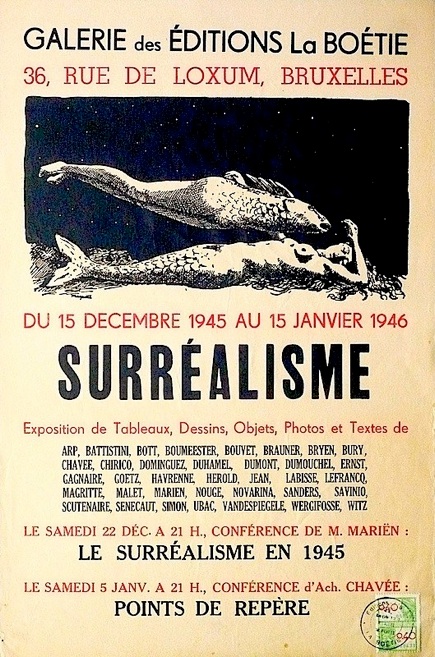




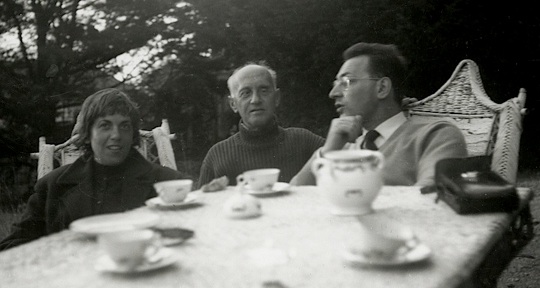
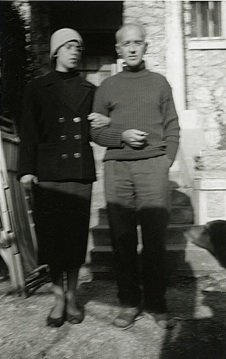
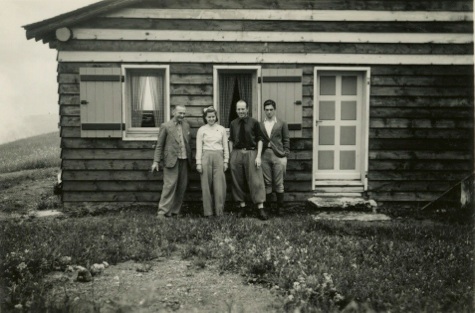
Family
Madeleine Novarina was born on November 28, 1923 in Thonon-les-Bains, on Lake Geneva, the youngest daughter of a family of nine children. Her father, Joseph Novarina, was a master builder whose building firm, employing hundreds of workers, performed the major works in the area, for his family, he had erected a building of on 2 Place des Arts, called the Novarina building and he occupied the entire first floor with his wife Anaïs Détruche and their nine children. His elder brother, Maurice Novarina became architect and notably built Grenoble’s Olympic Village, the church of the Plateau of Assy, the Super Italie tower in Paris and the Television Palace in Riyadh.
Childhood
The awakening of her artistic vocation was fostered by her stay in La Tour-en-Faucigny, at her aunt's, Marie Rey-Millet, mother of the painter Constant Rey-Millet, whose work was admired Jean Paulhan and Georges Limbour Etiemble. In her workshop Madeleine Novarina met C. F. Ramuz, Stravinsky and Jean Giono. Constant Rey-Millet painted several portraits of his cousin. One day in 1936, in his studio she played with the paint brushes and tubes of Rey-Millet who was amazed by the result. Thus, from the age of fourteen, Madeleine relentlessly indulged in her passion for drawing and painting watercolors. On her school notebooks she drew bizarre creatures, seemingly performing cruel rites or mysterious games. Her gouaches most often represented a nightmarish animal farm, where huge hens with bohemian allures, half-toads-half-dogs, mutants born out of the crossing of flying and creeping species frolicked in a disturbing and humorous scrum.
Teenage years
Invited in a mansion near Douvaine, the teenager was asked by the assembly why she painted. Exasperated by the patronising tone of the nobles and bourgeois who pretended to believe she was involved in some passing fad, she caused a scandal in this environment by answering defiantly: "I paint like I piss."
War
In 1941, Madeleine Novarina was called in Lyon by her sister Marie, who had married the son of a major haberdashery industrialist. Madeleine and her sister Marie were linked to the Combat group. The family’s apartment was used as a shelter and meeting room. Madeleine Novarina served as a liaising agent and carried fake identity cards for the resistants of Haute-Savoie. Both sisters were arrested by the militia and later released before being arrested again by the Gestapo on July 13th, 1943. Having not been able to prove Madeleine Novarina's involvement with the resistance, the Nazis decided to deport her Ravensbrück anyhow, judging her gouaches were degenerate art. The intervention of her lover, the lawyer Marcel Cinquin, saved both sisters. Madeleine Novarina returned to Thonon, where she lived until the end of the war and in the early postwar times.
Surrealism
After the Liberation, Madeleine Novarina decided to live the life of an artist in Paris with her brother Louis and his friend Max Molliet. During the year 1946, she attended the bi-weekly meetings of the surrealist group, on Mondays at the Cafe de la Place Blanche and on Thursdays at Les Deux Magots. Her first public event was her participation in the Surindépendants exhibition, held at the Parc des Expositions, Porte de Versailles in October of the same year. Other exhibitors included surrealists, like Francis Picabia and Oscar Dominguez, and abstract painters, like Poliakoff and Vasarely. The works presented by Madeleine Novarina that contained the “extreme violence” and “moving sincerity” Denys Chevalier spoke about in Arts, were La Tête à clous (head with nails), Les Zizis (the knobs) an untitled gouache and two large drawings with multiple characters.
In 1946, Madeleine Novarina exhibited several paintings in a gallery in rue des Saints-Pères, which used to show paintings by Surrealists women, and was invited to take part in a collective exhibition in Brussels. Jorge Caceres, leader of the Chilean group Mandragora, who was staying in Paris, asked some of her gouaches for the Surrealist exhibition he organised in Santiago, Chile. shortly after, he committed suicide in Santiago so she could not recover the works she had lent him, which was the case for all the participants. René Bacharach provided her with a salary as a scarf designer in the company "Aux cent mille cravates" (one hundred thousand ties). For two years she thus produced original fabric designs.
Hans Bellmer, who had been told she had visited his décalcomanies exhibition, wrote to her on April 26, 1947: "Mademoiselle, during my very recent visit to Paris I learned about you and the interest you showed towards my drawings exhibited at the Luxembourg Gallery (...) Thus, kindly let me, Mademoiselle, send you regards from a complete stranger." Madeleine Novarina was prompt to reply and this correspondence led to their meeting at the Café Flore. She met him daily thereafter.
Meeting Victor Brauner
"In March 1946, Madeleine Novarina felt her deepest artistic emotion to date when she entered the gallery where Pierre Victor Brauner was exhibiting paintings in wax, candle drawings and magical objects from his “hermetic period”. Today, these masterpieces are scattered through various museums, but this exhibition was not successful. The forty-three years old Brauner was alone in the middle of the gallery, emaciated and ravaged by the privations of war, with almost no teeth left, wearing a threadbare suit. Seeing the girl who was scrutinising his works with admiration, his mood instantly shifted from gloom to bliss and he spoke to her to enquire about her feelings. She was immediately conquered by the tone of his conversation, where a sense of humour, anxiety, candour, humility and megalomania formed an indissociable compound. Delighted to learn that she painted, he invited her to his studio, 2 bis rue Perrel. This was the beginning of an enthusiastic friendship from both sides.
On the occasion of his frequent visits to Madeleine, Victor Brauner complimented her on her gouaches, and encouraged her to continue in the same path of directed automatism. He then introduced her to other artists, including Jacques Herold.
In the post-war years, her relationship with Victor Brauner had become quite intimate. During the summer of 1948, Brauner sent a passionate letter to Madeleine, telling her: "You often appear in my association of ideas. Unfortunately I can not reconstruct in detail the same achievements as in dreams. I should perhaps not dwell until I am confident that these messages will strictly be sent to You, because my secret character demands secrecy, and in these times where postmen are so hungry, you never know. There was a painter who always sought more light: one night he ate the light bulb" Brauner concluded by saying:" I am pleased to have met Your character who, in my opinion, is the "beautiful germination" ... I beg you to forever regard me as a friend.”
Madeleine sent an untitled canvas for the Surindépendants exhibition. Brauner, for whom a painting was not completed until it had a title, gave her four to choose from: Contre-œuvre, Anti-aura, la Veuve joyeuse ou Progression Nigrido (counter work, anti-aura, the merry widow or Nigrido progression). Eventually, the Surindépendants exhibition, opening on October 16th, 1948 included two paintings by Madeleine Novarina: Progression Nigrido and Contre-œuvre, thus named by Victor Brauner.
Madeleine Novarina, text by Sarane Alexandrian, Éditions de l’Amateur, Paris, 1992, p. 43
In 1966, during his last one to one with Alexandrian, Brauner said about Madeleine: "She is an extraordinary woman. And her hands! Do you know any other creature who has hands like these?" He had respectfully kissed them several times and they had inspired several of his paintings such as l'Emancipatrice (the emancipatory woman).
Madeleine Novarina, text by Sarane Alexandrian,
Éditions de l’Amateur, Paris, 1992, p. 121
Constant Rey-Millet, peintre,
cousin de Madeleine Novarina

Madeleine Novarina and Victor Brauner
Madeleine Novarina, Victor Brauner and Sarane Alexandrian at the villa Beauvau in Blonville in 1958
"I paint to be not to be noticed," she said, thinking even a year before her death, to destroy all of her paintings and drawings. (...) She used to explain to me: "It would be extraordinary if a painter, at the end of his life, destroyed all of his paintings without ever having shown them to anyone except to a writer who would then try to describe them all from memory.”
Very impressed by her reading of Georges Bataille's La Part maudite (The Accursed Share), Madeleine Novarina was especially interested in what he said about the "potlatch", this wasting rite from Malaysian tribes who destroyed part of their wealth in bravado. Stating that this matched her state of mind, she used to break down or grind all kinds of objects. She had also wiped out her former husband's African relics.
Her husband, Sarane Alexandrian, envisaged various solutions to prevent the potlatch of her paintings, but Madeleine forcefully insisted, arguing that he himself had destroyed two novels and she was free to decide to eliminate those of her paintings she had renounced. They took several days to slice the paintings, to reduce into small pieces the masonite boards she wanted to turn unrecognisable before getting rid of them in a landfill. Most of these paintings were from her "afro-braunerian" period.
Madeleine Novarina, text by Sarane Alexandrian, Éditions de l’Amateur, Paris, 1992, p. 142
Destruction
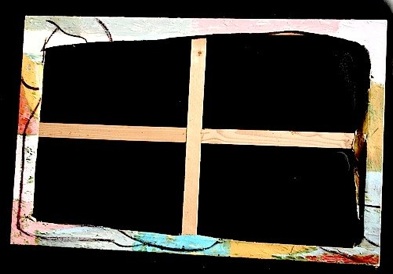
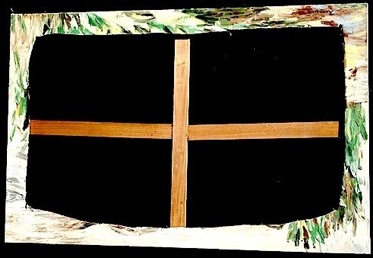
When her husband Sarane Alexandrian wrote his novel L’Œuf du monde (the egg of the world), her contribution was crucial in that she challenged from one end to the other his first version entitled Rat Blanc (white rat). On this occasion she started making drawings in the margins Alexandrian used to leave on his manuscripts for corrections. He was delighted to find them full of cute naked women whose presence mitigated the severity of her footnotes: "easy solution", "I am yawning", " awful and boring", "it drags on", etc.
The second version of the novel was lost in a story of war against the Invisible, which got on Madeleine's nerves, leading her to write in the margin: "From chapter 7 onwards, I have never read anything more grotesque, exaggerated, yawanry, ludicrous. I am appalled. .. I can no longer advise you on your future projects. "
Highly Offended, Sarane Alexandrian immediately wrote a third version of L'Œuf du monde. This time, her reaction was enthusiastic, except for the last chapter he had to rewrite nine times. L'Œuf du monde was rejected by several publishers, but enthused Eric Losefeld who published is as soon as he became the literary editor of the Filipacchi publishing house.
Madeleine Novarina, par Sarane Alexandrian, Éditions de l’Amateur, 1992, p. 148
Sarane Alexandrian’s Muse

Maurice Novarina in front of the chalet he built in Trécout, in 1936 between his brother Louis and his sister Madeleine
Madeleine Novarina, in June 1943, a month before the Gestapo arrested both sisters suspected of resistance to the occupier.

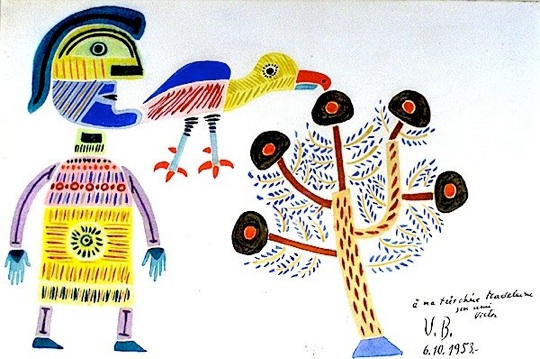
« À Madeleine, son ami Victor, 1947»
« À ma très chère Madeleine, son ami Victor, V. B., 6. 10. 1953 »
Biography by themes
Catalog of the Victor Brauner Exhibition at the Galerie René Drouin, December 1948. The section in colour was handmade by Victor Brauner and his friends Olga Drouin, Madeleine Novarina Francis Bouvet, Michael Herz, Claude Tarnaud and Sarane Alexandrian. It is during the making of this stencil, in Victor Brauner' studio that Madeleine Novarina and Sarane Alexandrian met for the first time.

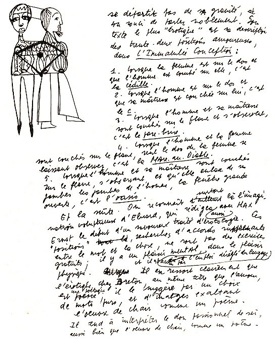
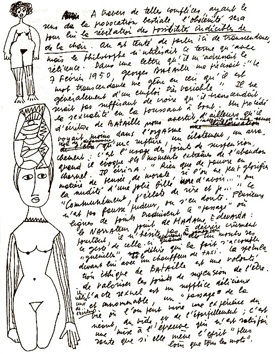


Examples of drawings Madeleine Novarina made when reading the manuscripts of her husband here for Les Libérateurs de l’amour (liberators of love), published by Editions du Seuil in 1977
Marie-Sol Parant’s Collection
Madeleine Novarina
IMEC/Alexandrian

Magritte's poster for the first post-war Surrealist exhibition, in which Madeleine Novarina took part. The last name on the list, Witz is the pseudonym of Christian Dotremont who Magritte had excluded from the event.






